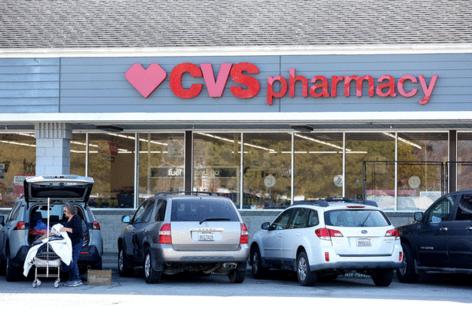A bitter pill: As pharmacies shutter, Pitt experts wonder about the impact on access
Published in Health & Fitness
It's no longer a new trend: Large retail pharmacies have been shuttering hundreds of stores across the nation. But an interactive map by University of Pittsburgh pharmacy researchers may help the public visualize the volume of those closures over the past 10 years — and glean the impact the closures may be having on the health of communities.
Since the map, which culls data from January 2014 through March 2024, was released, even more closures have been announced.
Between 2009 and 2015, one in eight pharmacies closed, by one 2020 estimate. The swath of closures amped up last October, when Philadelphia-based Rite Aid filed for Chapter 11 bankruptcy, in part due to lawsuits over opioids.
CVS closed 851 stores across the country by the end of June and said in an earnings call with investors it plans to close 900 more by the end of 2024.
"We continue playing a key role in delivering important community health services as demonstrated by the approximately 2 million immunizations we administered in the quarter," said Karen Lynch, president and CEO of CVS Health, in the Aug. 7 call.
And Walgreens announced last month a plan to close 1,200 stores over three years, citing billions of dollars in losses.
"In most communities, pharmacies are the most accessible health care resource," said Rob DiDomenico, associate professor of pharmacy practice at the University of Illinois Retzky College of Pharmacy, specializing in health equity. "To close these hubs in areas that are already suffering is removing another preventive treatment option for those patients."
Seeing the increasing closures as a public health threat, Lucas Berenbrok, associate professor of pharmacy and therapeutics at Pitt's School of Pharmacy, and colleagues in 2023 created the map. To visualize the trend, the team used data from the 10-year-plus period from the National Council of Prescription Drug Programs, with the white dots of closures against a dark background, a swath of lights obscuring parts of the country as the years pass.
"We wanted to show the sheer number of closures to try to bring awareness that this is something that's happening over the last decade," he said. "Hopefully the map will bring public awareness to how important the pharmacist is to local communities."
As pharmacies are a hub for vaccine and medication access, researchers are starting to understand the consequences of store closures on the accessibility of these services.
A 2019 study published in JAMA Network Open found that people in areas where pharmacies closed filled their prescriptions for heart medications, beta blockers and blood thinners less frequently than those living in areas without closures.
And a recent study of Colorado pharmacy closures between 2018 and 2022 found a link to decreases in antiseizure medication fills, translating to a month of missed medication over a six-month period. A majority of the closures occurred in urban areas, and mail-order prescriptions did not alleviate the discrepancy.
"These closures have led to a decrease in adherence," said DiDomenico. "Several of these mortality-reducing drugs, they don't take them as well after pharmacy closures. It really influences these communities."
There's good evidence that closures will disproportionately impact already stressed or impoverished regions. People may have to drive longer distances to open pharmacies following a closure; if they lack transportation altogether, they may fail to fill prescriptions or miss out on routine vaccinations.
And missing out on flu, COVID-19 or RSV shots could lead to an increase in the utilization of expensive health care services, like emergency room visits or medical treatments.
"The most damning part of this is that many of these areas where pharmacies are closing are already suffering from a lack of resources," said DiDomenico. "It really amplifies the access issue."
The American Pharmacists Association said in an October statement that closures disproportionately worsen health disparities for the marginalized, "increasing their vulnerability to complications from both acute and chronic conditions which are managed by pharmacists."
Researchers won't know the long-term outcomes of these closures on health for years to come, Berenbrok said.
Is there a solution to preventing people from losing key services that pharmacies provide?
Mobile clinics have become a more popular resource, as vans can meet patients directly in their communities and offer immediate services. And community resource events, like pop-up clinics or fairs, can act as spot checks for disappearing coverage.
But they don't solve the bigger problem of access to chronic medications, said DiDomenico.
"We need to be incentivizing chains to stay in communities somehow," he said. "It's a complicated problem."
Berenbrok wants to see more awareness around struggling pharmacy business models, and how they've led to widespread closures. And that is part of the interactive map's role.
"We want more awareness about the value of pharmacies," he said.
To address the growing issue, the American Pharmacists Association introduced legislation into Congress last March that, if passed, would permanently expand Medicare coverage for essential pharmacy services such as routine vaccinations.
Berenbrok said the legislation is the "furthest we've ever gotten" and is a foot in the door for bolstering pharmacy care. The bill, HR 1770, was referred to the House Committee on Energy and Commerce; Ways and Means on March 31, 2023, where it remains.
_____
(c)2024 the Pittsburgh Post-Gazette. Visit the Pittsburgh Post-Gazette at www.post-gazette.com. Distributed by Tribune Content Agency, LLC.










Comments